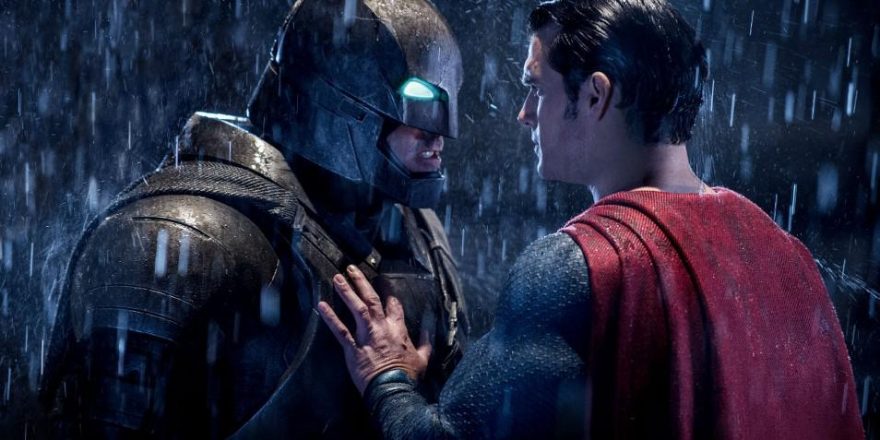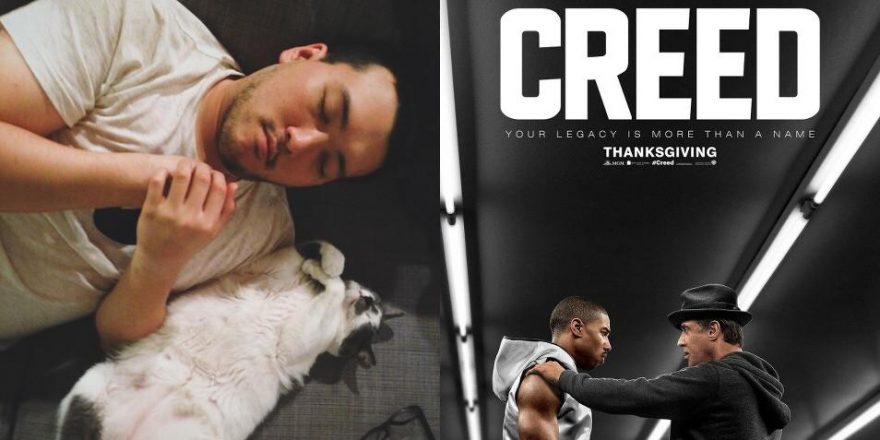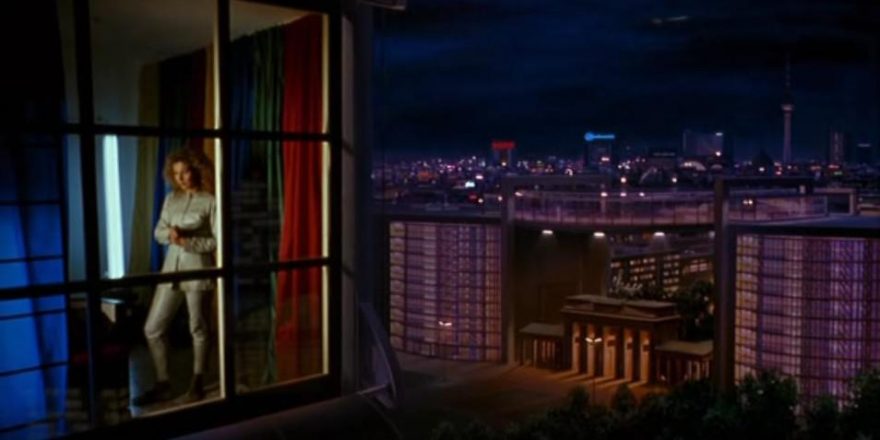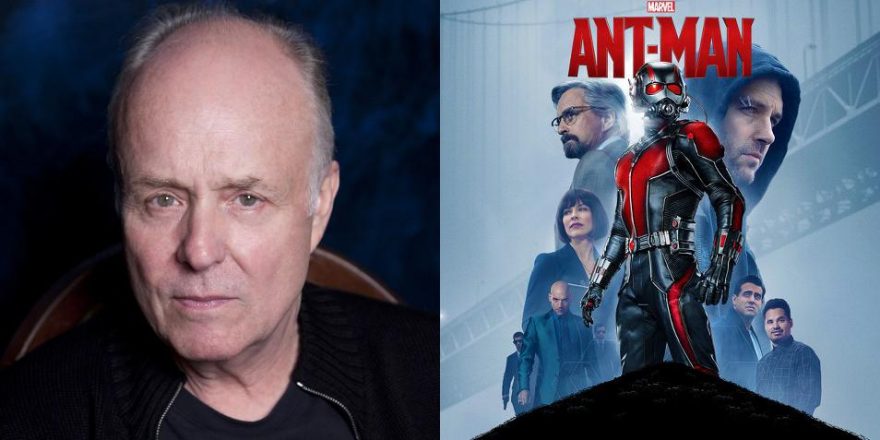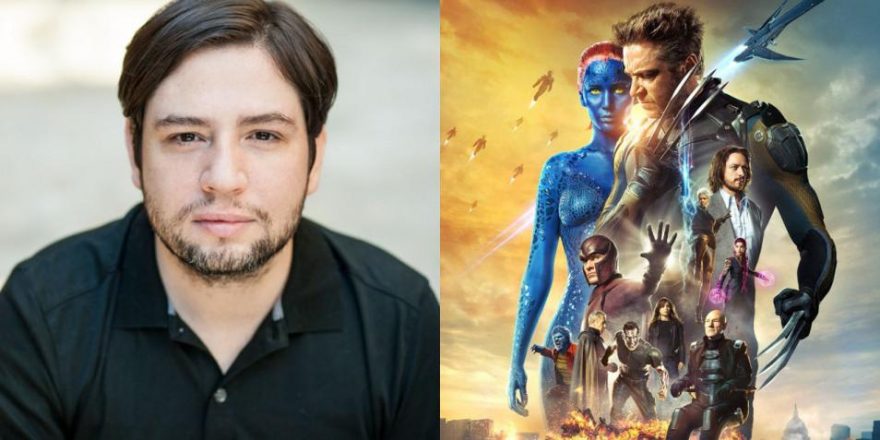I knew this movie was going to be bad. I was convinced of its terribleness. The industrial geek-blogger complex had been drip-feeding rumors of corporate malfeasance and directorial hubris, and I have a low-key reactionary grudge against any movie considered a sure thing. Friends in Los Angeles had sent me a few lines from the screenplay that had become an inside joke. I was also quite ambivalent about the director’s worldview, which I had previously deciphered as being utterly opposed to my own, and had a distaste for some of his previous movies (Sucker Punch, in particular, was the rare movie I was compelled to walk out of). Then there was word of liberties taken with sacrosanct comic-book icons, which somehow really troubled me. It felt disrespectful to the concept of heroism and superheroes as family entertainment. The trailers did little to help. They had me convinced that Batman v Superman: Dawn of Justice was a right-wing fantasy: a billionaire’s paranoid vision of how he must stop an exceptional American leader who was secretly an alien tyrant. Could Batman v Superman be a metaphor for the right’s irrational fears of Obama? Did anyone ever smile in this comic-book movie?
I had a ceaseless, daily intake of information, all pointing to failure on every level. Then the reviews came out, and the film’s fate was sealed by consensus. This was undoubtedly a baffling trainwreck, a folly. According to the authoritative Rotten Tomatoes, it was worse than Affleck’s own Daredevil, as bad as Green Lantern (I authoritatively believe these to be two of the worst movies ever made). An ever-growing chorus re-aggregated this information on social media, an onslaught of sick burns on the monumental mistakes of Zack Snyder, who editorials and Internet petitions said needed to be fired from future movies, and whose every proclamation during a press tour had been analyzed to give proof of his underlying psychoses.
Warily, begrudgingly, I decided I had to see the movie for myself so I would at least have some ownership of my carefully chosen animated GIF reaction – and because of my fascination at how a corporate body could get such an enormous financial gamble of a movie so wrong. So I went online to buy a ticket. And realized the movie hadn’t even come out yet.
—-//—-
In New York City, I’ve come to enjoy watching those rare films actually shot with IMAX film cameras on a 70mm IMAX screen, especially at really late night shows. The combination of colossal screen, flickering shutter and disrupted circadian rhythm adds a dreamlike, narcotic edge to things. In the sold-out, packed theater I sat next to an elderly gentleman from Yonkers who told me, just before the movie began, “Man, some people take these things way too seriously.”
And something slowly began to uncoil within me as the film unspooled. I was enjoying myself. I was laughing at visual wit (as was the guy sitting next to me), scrambling to keep up with multilayered images that supposed contradictory and complex ideas. The lack of coherence started to become pleasurable, dreamlike, motivated by emotion and ideas over logic. I let go, and the heresies taken with the iconic characters started to feel blasphemously fun. Necessary, even.
So what did I see in Batman v Superman? An onslaught of eccentric paradoxes and muscular visual grandeur.I mean, there’s a single perfectly framed shot in this movie – and you have to agree that Snyder’s one of those directors who doesn’t do anything visual without intent, sometimes to the point of overkill – that strongly implies that during an epic offscreen heist, Batman took the time to fuck up Lex Luthor’s basketball. Moments like this, and a climactic melodramatic scene that the entire movie’s conflict turns on, reminded me most of Step Brothers, making me think that maybe this movie wasn’t totally serious, that maybe it also had a sense of its own ridiculousness. While I anticipated a litany of articles detailing in list form (and mimicking a studio exec’s notes on) what the movie got wrong, all of this dissonance was somehow satisfying to me.
Now, I recognize that I’m very alone in feeling this. I know there are parts of this movie that don’t make sense, that are objectively bad. (Admittedly, my own bias is for movies that don’t make sense, and bad movies can offer a unique lunacy.) I could read a fatigue, a diminishment of hope in some as the audience shuffled out of their seats. We’ve always had it that superhero stories are our modern myths, but lately there’s been something more directly religious, an outbreak of fundamentalism around Batman and Superman, an idea that their qualities and heroism are fixed absolutes. Wondering what 700 people were doing in a NYC movie theater at 2 a.m., this movie felt like a church service taken over by a heretical priest, and I had my faith shaken. I had to reckon with the fact that I had unquestionably known that this was a bad movie – until I saw it. We always need time to truly understand these things, though, and I might even someday think of this as a great movie, as alone as that would make me. The only way to know how I felt about Batman v Superman was to shut out the flood of discursive, ever-present information and expertise with which we discuss movies now, and focus on what I’d seen.
—-//—-
So what did I see in Batman v Superman? An onslaught of eccentric paradoxes and muscular visual grandeur. Snyder is a fetish filmmaker in an age of coverage gatherers. You can tell his filmmaking comes alive more when he’s filming a movie star’s body doing a workout than a CGI battle. A mid-movie dream sequence is so out-of-the-blue batshit and offers such insane vision and off-brand-ness that I wondered if it wasn’t a sly suggestion that this is what we could be doing with genre movies if they weren’t so devout to nostalgia. There is signifier upon signifier open for multiple contradictory interpretations, and Snyder does keep insisting all his work has elements of irony (maybe it wasn’t so crazy that I laughed my ass off at the ludicrous 300).
For instance, the final villain is that most terrible abomination: a generic CGI troll. And troll is the right word. This creature, Doomsday, has a face that resembles Trump, and it behaves like fundamentalist terror groups, or men who terrorize women online: it is unstoppable, senseless, growing ever larger and dangerous with every blow delivered to it. In the end, the only thing that can take it down is noble sacrifice by immigrants, including one of the movie’s few genuine rays of hope, a Wondrous Woman. The image that really stands out, especially in this socially mediated presidential campaign, is one of Superman surrounded by humans grateful for their rescue, and the look on his face is one of doubt and alienation, at odds with the heroism that the shot communicates. It’s both glorious and unsettling. It’s the central conceit of the movie: what meaning do we invest in icons?
These aren’t the superheroes we hoped for, but, as Walter Chaw has written eloquently, they’re maybe the ones we deserve. And furthermore, as adults we sure have made these stories our concern. I myself am conflicted about what it says about us that these stories might be for children, but I can’t help but note that as adults we’ve chosen these movies over others time and again as our dominant pop-culture narratives. One of the most depressing, childish moments I witnessed in a movie theater last year was a group of excited and nostalgic men in their thirties at the new Star Wars, hysterically laughing at a kiss between two women in the trailer for Carol. And if I think back, the age at which I was most obsessed with and took seriously the deconstructionist, satirical and ultraviolent Frank Miller Batman comic book The Dark Knight Returns was when I was 10 years old. I can’t fathom how resilient children must be today to try and comprehend a world full of mass shootings and mass terrorism and mass hatred demonstrated in public, what stories they must have faced already.
So why does it seem like such an affront to have this Batman and Superman responsible for and tangling with the consequences of their own murders in an age of U.S. drone assassinations and the ceaseless murders of unarmed Black women, men and children by our own appointed servants of justice? Is the idea of our comic-book superheroes being as complicit in abuse of power what really gets under our skin? Aren’t all American superhero movies about exceptionalism to some degree? Maybe this isn’t a crowd-pleasing movie, but it’s a disturbing, fascinating movie that is both enthralled by and suspicious of the erotic, political and philosophical implications of power.
In an age of consumer entitlement, Snyder could’ve given us the movie we all wanted: something fun, apparently. A coherent, pleasing movie about a traumatized vigilante who dresses like a small-winged mammal and an alien god, indebted to the factory-like precision machinations of storytelling in Pixar movies. Instead, in pursuit of a fever dream, he gave us something alienating, jarring, ironic and singular. Batman v Superman: Dawn of Justice is the Eyes Wide Shut of superhero movies, another misunderstood movie which subverts masculine heroism to immerse us in neuroses, impotence and paranoia, set in an impossible dream city that all too resembles our own. We won’t truly understand it for a while, and no amount of information about its box office or effect on Time Warner shareholders’ profit margins will help. If all we’re going to continue to watch are movies about superheroes, isn’t it about time we saw ones about their childhood memories, about their dreams and nightmares, living in a world made of our own? Isn’t it time we started asking ourselves, what is it really about power that thrills us, that requires us to commune with it? Batman v Superman: Dawn of Justice asks those questions, and the implications are both triumphant and unpleasant. Luckily for us, there are countless other superhero movies offering delights and moral absolutes to soothe us in the world that we have made.


